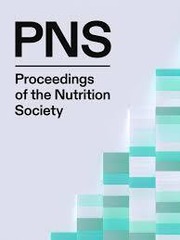Globally the prevalence of cardiovascular disease (CVD) and diabetes is increasing ( Reference Mathers and Loncar 1 ). The WHO estimate that by 2030, CVD will be responsible for 23·3 million deaths annually, and the prevalence of diabetes will have risen to 336 million ( Reference Mathers and Loncar 1 ). Processed red meat has been associated with CVD and Type 2 diabetes due to its unfavourable fat profile and high sodium content ( Reference Micha, Wallace and Mozaffarian 2 ). The aim of this study was to characterise patterns of dietary meat intakes, socio-demographics and cardio-metabolic risk factors. This study used data from the National Adult Nutrition Survey (NANS), a cross-sectional food consumption survey carried out between 2008 and 2010. Habitual food and beverage intake data was collected for 1500 Irish adults using a 4-day semi-weighted food diary, 79 % of whom provided blood and urine samples ( 3 ). For the purpose of this analysis, under reporters were removed and only participants who provided a fasting blood sample were included. Mean daily processed red meat intake (g/d) was used to divide the NANS into processed red meat consumption groups. Statistical significance differences between groups was assessed using a general linear model, controlled for age, gender, energy (kcal), social class, smoking status, supplement use and physical activity, with Bonferoni post hoc test.

abcd Different uppercase superscript indicate significant differences between consumption groups
Gender, age and social class differed across the consumption groups; the non-consumers were predominantly older, professional females. High consumers were generally younger, unskilled males (P < 0·001), with a higher smoking status and with a lower supplement usage (P < 0·001). Furthermore, high consumers had a higher BMI (P = 0·016), yet a lower body fat percentage (P = 0·022), a greater muscle mass (P = 0·023) and higher physical activity levels (P = 0·002) than all other consumer groups. As a percentage of total energy, lower intakes of carbohydrates, sugars (P < 0·001) and higher intakes of total fat, SFA, MUFA and sodium (P < 0·05) were observed in high processed red meat consumers. Insulin, c-peptide, NEFA and TAG concentrations increased, but HDL cholesterol decreased with processed red meat consumption. Similarly indices of insulin resistance, HOMAIR and QUICKI, and CVD risk, TAG: HDL, were modulated with meat intake. Therefore it would seem, high processed red meat consumption presents a lower dietary quality, with increased cardio-metabolic risk. Whilst, further pattern analysis is required to investigate this relationship, the data suggest that modification of processed meat composition may be a good target to improve dietary quality.
This project was funded by FIRM under the NDP 2007–2013

